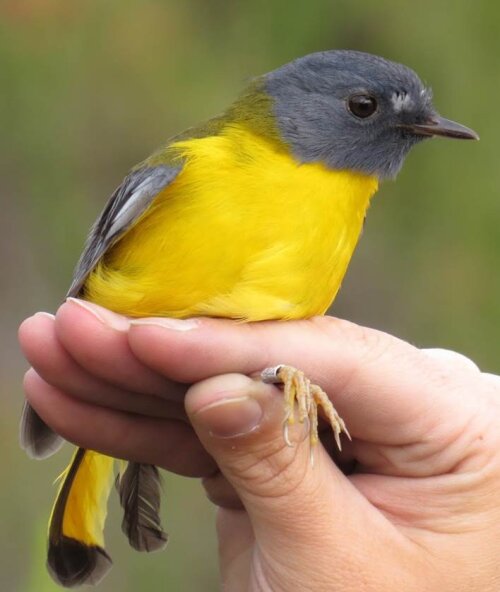Since 1996 we are studying populations of 9 understorey forest birds in a series of cloud forest remnants in the Taita Hills, Kenya. These hills are densely populated and the original forest is reduced to a few hundred hectares. Due to its severe isolation from other areas with cloud forest the area harbours many endemic species including the critically endangered taita thrush (Turdus helleri) and taita apalis (Apalis fuscigularis).

The backbone of our research are standardized capture-recapture data since 1996. Based on these captures we have studied dispersal rates, population genetic structure, and used fluctuating asymmetry as a proxy for sensitivity to environmental degradation. Since 2002 the leading role in the project is taken by the Terrestrial Ecology lab in Gent (Luc Lens) in close collaboration with our group and with Mwangi Githiru (Kenya).
In addition to these long-term studies we have performed more detailed investigations on a few focal species, notably the cabanis’s greenbul (Phyllastrephus cabanisi) and white-starred robin (Pogonocichla stellata). Previous work has focused on aspects of social structure (floaters), nest predation and genetic population structure (PhDs of Tom Callens and Toon Spanhove in Gent).
The Phd of Job Aben used a combination of field radiotracking and spatial modeling to study the impact of different reforestation scenarios on population viability of forest birds, using the two mentioned species as main models. A more recently finished PhD project (Dries Van Loock, both co-supervised by Gent and Antwerp) focused on the effects of habitat fragmentation on dispersal and cooperative breeding in cabanis’s greenbul.
Our group also has a long-standing partnership with the Centro de Biodiversidad y Genetica in Cochabamba, Bolivia. In the course of this collaboration three Bolivian PhDs were supervised by Erik Matthysen, one of them dealing with population viability of birds in high-altitude Polylepis woodland (PhD Jennifer Cahill). We currently participate in a project on Polylepis seed dispersal in collaboration with plant ecologists from Leuven. In 2020 a PhD project was completed on systematic conservation planning of Polylepis woodland patches, focusing on birds as the main conservation targets (PhD Constance Fastré).
Highlighted publications
Cousseau L, Hammers M, Van de Loock D, Apfelbeck B, Githiru M, Matthysen E, Lens L. Habitat fragmentation shapes natal dispersal and sociality in an Afrotropical cooperative breeder. Proc Roy Soc B in press
Fastré C, Possingham H, Strubbe D & Matthysen E. 2020. Identifying trade-offs between biodiversity conservation and ecosystem services delivery for land-use decisions. Scientific Reports 10: 7971. Doi: 10.1038/s41598-020-64668-z
Van De Loock D, Strubbe D, De Neve L, Githiru M, Matthysen E, Lens L. 2017. Cooperative breeding shapes post-fledging survival in an Afrotropical forest bird, Ecology and Evolution 7:3489-3493.
Aben J, Bocedi G, Palmer S, Pellikka P, Strubbe D, Hallmann C, Travis J, Lens L, Matthysen E. 2016. The importance of realistic dispersal models in planning for conservation: application of a novel modelling platform to evaluate management scenarios in an Afrotropical biodiversity hotspot. J Appl Ecol, 53: 1055-1065